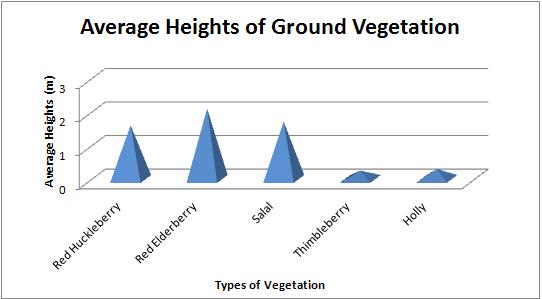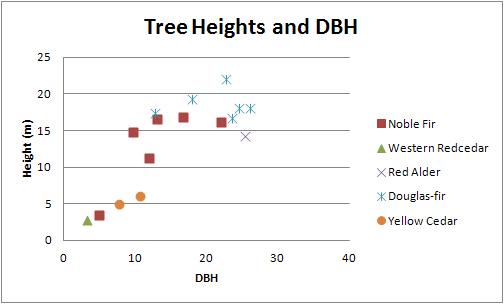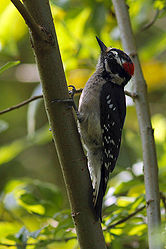CFS: Douglas-fir Plantation, 50yrs
History
In 1962, a UBC Forestry graduate student by the name of Oscar Sziklai started his PhD on the genetics of key physiological and morphological traits in Douglas-fir. He started this plantation as an experiemental site for testing variation and heritability of these traits in controlled pollination of 3 or 4 trees. His findings can be seen in his publications online. Dr. Sziklai went on to become a Professor of Genetics in the Faculty of Forestry at UBC.
General
Elevation: 71.5 m above sea level
Aspect: Southwest
Adjacency: Alongside this older plantation is an access road and a natural-growth red alder stand.
Crown Closure: 90 %
Major Tree Species by Volume: Douglas-fir (Fd)
Average Height of Trees: 24 m
Site Series: 5 Cw Sword fern
This is a pure, fully stocked conifer plantation with closed crown and no understory or shrub layer; forest floor covered in leaf litter up to 10cm deep. It has a wide variability in structure development and generally on a well drained site.
Soil Profile
Forest Floor
In this conifer forest, the organic layer of the soil is fairly thin. The litter layer is compiled of tree needles, twigs, and other recently deposited material. The fermentation layer is loosley structures and there is more of a gradual boundary between the organic and mineral soils than a distinct line. This forest humus form would be classified as a moder.
Mineral Soil
| Horizon Type | Depth (cm) | Colour | Texture | Course Frag. % (G/C/S) | Root Abundance/size | Structure Class | Structure Kind |
|---|---|---|---|---|---|---|---|
| Ah | 0-14 | 10YR 2/2 | Sandy-loam | N/A | Few/Fine | Fine | Granular |
| Bfh | 14-33 | 10YR 4/6 | Sand | N/A | Few/Medium | Fine | Granular |
| Bf | 33-56 | 10YR 6/8 | Sand | N/A | Few/Fine | N/A | Single Grain |
| B | 56-88 | 10YR 3/6 | Sand | N/A | None | Unsorted | Sub-angular |
| C | 88+ | N/A | N/A | N/A | N/A | N/A | N/A |
High water table indicated in the C horizon from gleying.
Understory Vegetation
There are a few indicators of pests and pathogens in this area. Bored holes by woodpeckers are visible in standing dead and live trees. Although this act is damaging to the living tree, the nooks create a safe habitat for young and are a source for feeding. Brown rot is easiest seen in standing dead wood as it is a fungi that attacks the cellulose and associated carbohydrates within the wood. In the advanced stages of decay, the lignin residue is friable and splits along regular planes. Another indicator of pest in this area is beetle frass. Beetle frass is a solid excrement, commonly larvae, left by bark beetles in the inner bark.
A few trees have slight lean and unstable roots perhaps as a result of the current pest and pathogens. Although it is uncertain why there is mortality in some of these douglas-firs, there is a clear concern for the dangerous crown tops and thick sloughing bark or sloughing sapwood that is present amongst these trees.
Tree Layers
This well established douglas-fir plantation has a more developed sub canopy layer when compared to the younger Douglas-fir Plantation. In this case, trees are able to develop within the stand and not just reside on the rim. Red alder, noble fir, and holly make up the majority of sub canopy trees while other shrubs, such as the red elderberry, make up the ground vegetation.
Wildlife
Downy Woodpecker feed in this stand and in the adjacent red alder stands. Click on the Play button to hear what they sound like.
Critical Thinking
What do you see when you first look at this stand? How is it different from the 20 year old Douglas-fir plantation?
Do you think that these differences are because the stand is older, or because they were planted farther apart, or both?
What kinds of products could be made from these trees? Will the branches affect lumber quality?
Is there good wildlife habitat here? What features are present? What is missing?
What will this stand look like in 50 years time?






